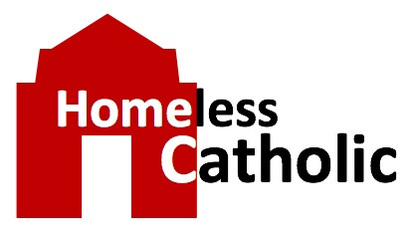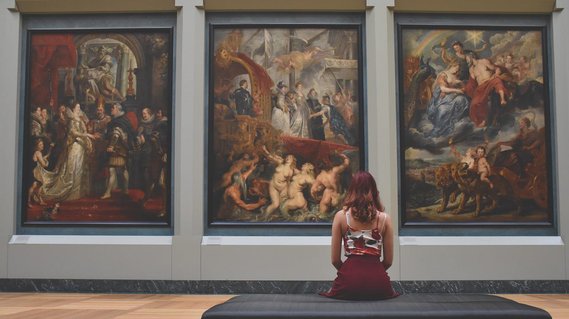Recounting Jesus' last three days
Sundown on Holy Thursday to sundown on Easter Sunday is considered the most solemn part of the liturgical year. These days are counted as the Hebrew's counted their days, from dusk to dusk (not dawn to dusk as we do). So the Church refers to this three-day period as the Triduum (or Easter Triduum or Sacred Triduum or Paschal Triduum).
Basically, the Triduum is one great liturgical festival recounting the last three days of Jesus’ life on earth.
Image by Pexels
Why no Mass on Holy Saturday?
By Tim Trainor
Seven Readings:
Genesis 1:1—2:2
Genesis 22:1-18
Exodus 14:15—15:1
Isaiah 54:5-14
Isaiah 55:1-11
Baruch 3:9-15, 32--4:4
Ezechiel 36:16-17a, 18-28
Epistle: Rom 6:3-11
Gospel: Lk 24:1-12
Here we are folks, right in the middle of the week that changed the world: Holy Week!
This a “non-standard” type of reflection based on the liturgical events we are now undergoing instead of the assigned daily Mass scripture readings for this upcoming Saturday. Instead, you will hopefully learn what the "Triduum" is in our Church calendar this weekend, and why we have it.
This Saturday, Holy Saturday, the Church waits at the Lord’s tomb in prayer and silence, meditating on his passion and death and then on his descent into Hell, as we await His Easter Day resurrection.
On Holy Saturday the Church abstains from the Sacrifice of the daily Mass itself, with the sacred table left bare. After the solemn Easter Vigil, we experience the anticipation by night of the resurrection, when the time comes for paschal joys, the abundance of which overflows to occupy the next fifty days!
Holy Communion may only be given on this Saturday as Viaticum (Last Rights).
This coming Saturday is Holy Saturday, the only day of the year when there is not a daily Mass! Seven readings, an Epistle, and a Gospel reading, but no Mass. Therefore, I decided to reflect upon Holy Saturday itself and the liturgical period that it occupies, which is called the Triduum (Latin for 3 days).
Holy Saturday almost escapes us in the rush from Good Friday to Easter. What are we to make of this strange and silent day, thousands of years later plus when we already know the outcome that tomorrow holds? Some say that we should just focus on the festivities of Easter, only a few hours away. But the Catechism tells us that God bestows special graces throughout the entirety of the Sacred Triduum.
Jesus did not just pass instantaneously from death to the resurrection, skipping over the loneliness and sadness that death has introduced into God's creation.
Thus, Holy Saturday consoles us by revealing that even the painful cold and silence of death itself has been embraced by our Lord. And that is the Good News what I propose we reflect upon this morning — understanding what the Triduum is.
Sundown on Holy Thursday to sundown on Easter Sunday is considered the most solemn part of the liturgical year. These days are counted as the Hebrew's counted their days, from dusk to dusk (not dawn to dusk as we do). So the Church refers to this three-day period as the Triduum (or Easter Triduum or Sacred Triduum or Paschal Triduum).
Basically, the Triduum is one great liturgical festival recounting the last three days of Jesus’ life on earth.
Holy Saturday is the day that Christ was in the tomb. So, appropriately on that day, there is no daytime Mass. It is a day of silence and sorrow, the final one before the Easter Vigil begins that evening.
We remember, with Mary and the disciples, that Jesus died and was separated from them for the first time as he lay in the tomb. The faithful therefore often continue their Good Friday fast into Holy Saturday although it is not required.
In the Apostles Creed we pray “He descended into hell” (translated 'Hades', the temporary abode of the dead – not the eternal lake of fire). Here the Creed is describing what Jesus did in the time between his burial and resurrection. Jesus descended to the realm of the dead on Holy Saturday to save the righteous souls, such as the Old Testament patriarchs, who died before his crucifixion.
The Catechism of the Catholic Church calls Jesus’ descent into the realm of the dead, “the last phase of Jesus’ messianic mission,” during which he “opened heaven’s gates for the just who had gone before him.” Before Holy Saturday, Church Theology tells us that there were no souls enjoying the beatific vision of God in heaven!
Liturgically, the Triduum is a single event/celebration that spans three days.
It begins on the Thursday before Easter and ends the evening of Easter Sunday. “Isn’t that four days?” you might be asking yourself. The Church counts these days liturgically, so the “day” begins the evening before. (Remember, “evening came, & morning followed, the first day” from Genesis). So, Thursday evening to Friday evening (Day 1), Friday evening to Saturday evening (Day 2), Saturday evening to Sunday evening (Day 3). Remember, we are counting days as the Old Testament Hebrews did via a dusk-to-dusk day setup.
Another unique element about the Triduum is that a single liturgy encompasses all three days. It is not three separate liturgies. This is best seen when someone attends all three Masses (Holy Thursday, Good Friday & Easter Vigil) physically in the same church.
At the end of the Mass on Holy Thursday, you’ll notice there is no final blessing or dismissal. People are invited to pray quietly before the Blessed Sacrament and then leave when they are ready. The liturgy doesn’t formally conclude; it simply pauses.
It picks up again on Good Friday with the Solemn Celebration of the Lord’s Passion. You’ll notice that this solemn liturgy doesn’t have the usual, formal beginning we are used to: an entrance procession and greeting by the priest. Rather, the priest and ministers enter the sanctuary when they are ready and, after prostrating before the altar, they simply pick up where they left off the evening before. Like Holy Thursday, the Good Friday liturgy doesn’t have a formal dismissal; rather, the priest simply says a prayer over the people before departing. Thus another pause.
Although the Easter Vigil begins with the sign of the cross, it begins in a different location, outside, around a fire without an opening song or procession. We pick up our prayer from where we left off the day before. And it is only at the end of the Easter Vigil Mass we hear the formal dismissal of the assembly, via “Mass is ended,” followed with the double alleluia. The Easter Vigil, which always is to begin only after sunset on Saturday, takes place on the third day of the Triduum, so the vigil is considered the Easter Mass. Subsequent Masses are celebrated on Sunday proper, for those of us unable to attend the vigil.
What do you think Jesus was doing on Holy Saturday?
In one of his Homilies, Pope Benedict XVI said: Holy Saturday is the day when God remains hidden, we read in an ancient Homily: “What has happened? Today the earth is shrouded in deep silence, deep silence and stillness, profound silence because the King sleeps.... God has died in the flesh, and has gone down to rouse the realm of the dead.” In the Creed, we profess that Jesus Christ was “crucified under Pontius Pilate, died and was buried. He descended to the dead. On the third day, he rose again.”
Later, in a visit to the Shrine of Turin, Pope Benedict XVI further developed this idea as follows: Holy Saturday is a “no man's land” between the death and the Resurrection. This “no man's land” was entered by One, the Only One, who passed through it with the signs of his Passion for man's sake. And the Shroud (that He was wearing on Good Saturday) speaks to us precisely about this moment (and carries the signs of it) – testifying exactly to that unique and unrepeatable interval in the history of humanity and the universe in which God, in Jesus Christ, not only shared our dying but also our remaining in death, in a most radical solidarity.
So, in this “time-beyond-time,” when Jesus Christ “descended to the dead”: What do these words mean? They mean that God, having made himself man, reached the point of entering man’s most extreme and absolute solitude, where not a ray of love enters, where total abandonment reigns without any word of comfort. That is: “hell.” Jesus, as the Christ, by remaining dead in the grave, passed beyond the door of this ultimate human solitude so He can meet and lead each of us across it with Him when our time comes.
Wow – that's some pretty heavy stuff, don't you think!
And maybe that is why the phrase “Be not afraid” is said to appear 365 times in the Bible.
Here are Three suggestions as to what we as Catholics could do on this Holy upcoming Saturday:
1. Set a period of time aside on this Holy Saturday for prayer, for recalling Christ’s suffering, and even for trying to physically feel/sense the emptiness which the Apostles and disciples must have experienced as Christ lay in the tomb. Because the Blessed Sacrament is reserved in another location after the Mass of the Lord’s Supper Thursday evening, the main tabernacle of the church is empty, with the door left open, plus the altar is free of covering or other decorations. Many Catholics therefore take this time to pray before the empty tabernacle, trying to that end, in some physical way, to experience or sense Christ’s absence and thus be grateful for His Presence throughout the rest of the year.
2. In 2008, Pope Benedict XVI encourages Catholics to set aside an additional period of time for silence during the Triduum “While waiting for the resurrection, the faithful can persevere in the wait with Mary by praying and meditating,” he said. A period of “silence is necessary to ponder the reality of human life, the forces of evil and the enormous power of good that God unleashed by the Passion and resurrection of Christ.”
3. Holy Saturday is a day of mourning for the Church, and thus the nature of the day is somber and reserved. Where possible we should each try to continue all or some of the fast and abstinence of Good Friday into Holy Saturday as it is encouraged to do so (per suggestion of Pope Paul VI). It is not, however, obligatory to do so.
It is important for each of us to finish Lent strong! That way each one of us can truly experience the full goodness that comes from our Lord’s Resurrection and more completely share the exciting and Good News of the Week that Changed the World with all our fellow Christian brothers and sisters!

